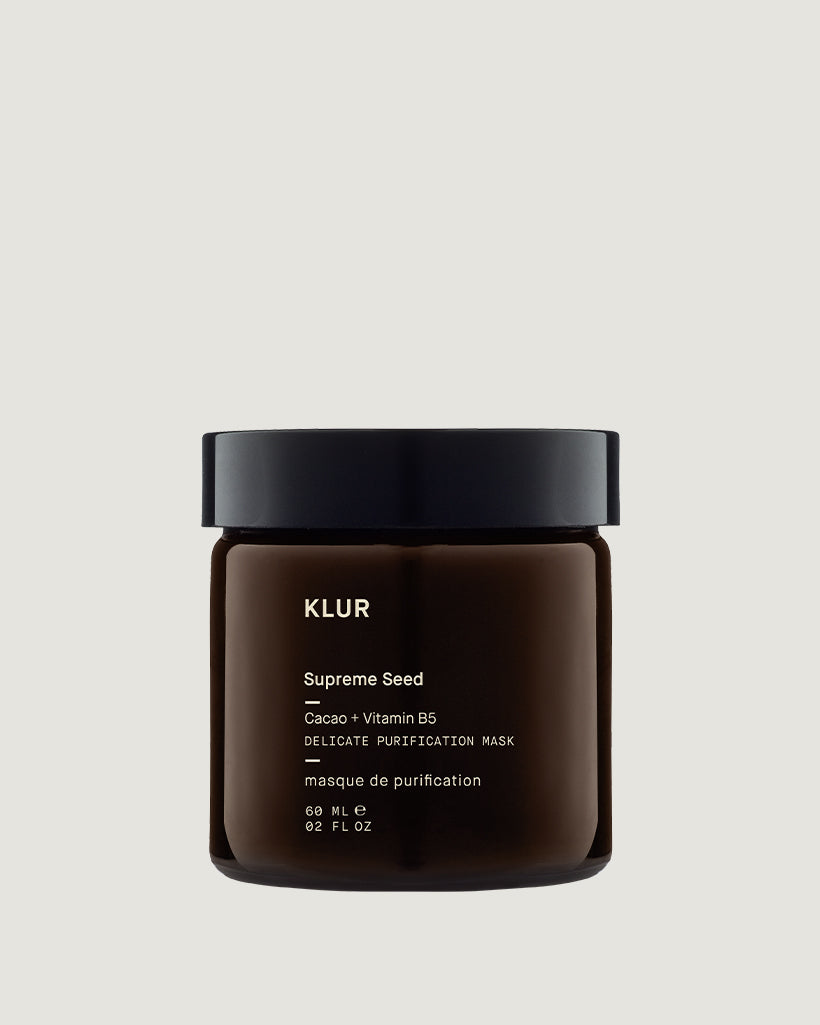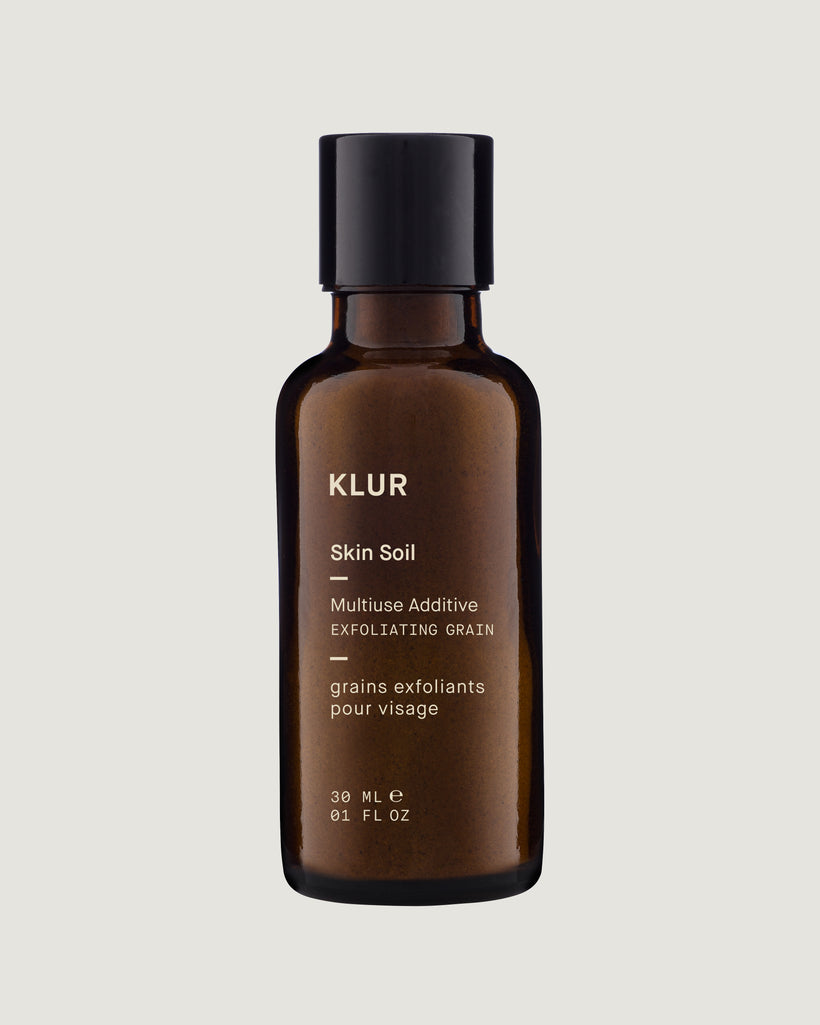Unlike other fruit-derived AHAs, lactic acid is made from lactose in milk. It works by increasing ceramide production in the skin's protective barrier, working to prevent congestion and improving water retention while smoothing the appearance of pigmentation.
It works particularly well to treat sun-damaged skin and is notable for being the gentler option of the chemical exfoliants.
Lactic acid is our most beloved acid in the KLUR range; we believe it is one of nature’s most effective acid options for a range of skin types. It is featured in Supreme Seed and we will continue to incorporate it into new formulations as the KLUR skincare offering expands.
Glycolic acid
The most common type of AHA, glycolic acid is derived from sugar cane and has the smallest molecular size of the AHAs, meaning it can penetrate more deeply into the skin.
In addition to exfoliation activity, glycolic acid also stimulates the production of collagen and elastin so, with consistent use, glycolic acid can improve signs of premature aging.
While glycolic acid can accelerate skin healing, it’s important to know it heightens the skin’s sensitivity to the sun so daily SPF protection is a must.
This AHA is best suited to normal and combination skin - sensitive skin types may find it too disruptive.
Malic acid
Malic acid is a mild AHA derived from apples. The exfoliating properties of Malic acid help smooth skin tone and clear pores.
It's rarely spoken about; however, it is very effective and gentle due to its large molecule size. This AHA plays a role in supporting healthy skin barrier function by helping aid in gentle exfoliation and ceramide stimulation.







